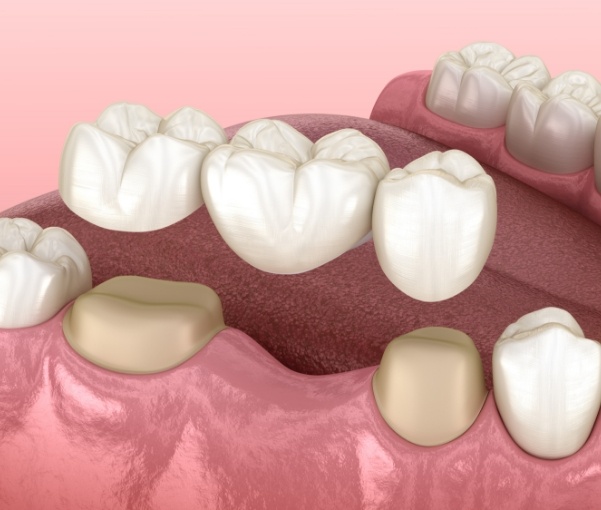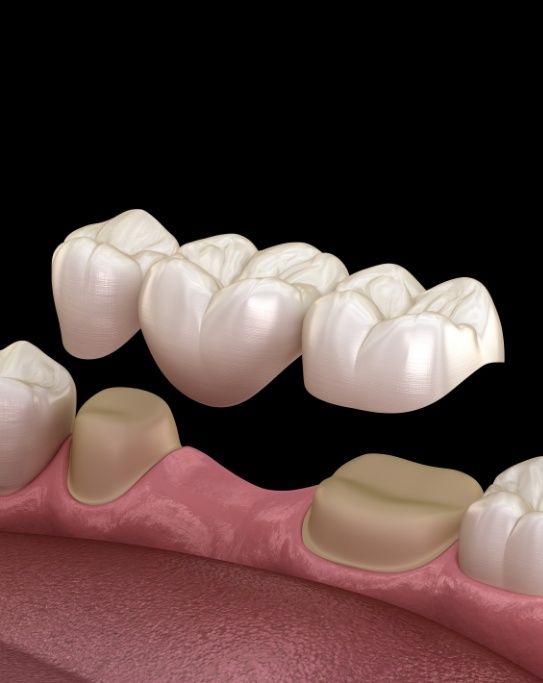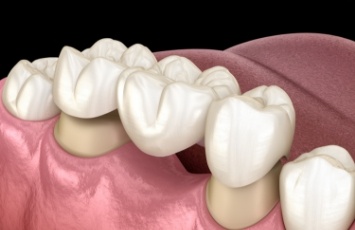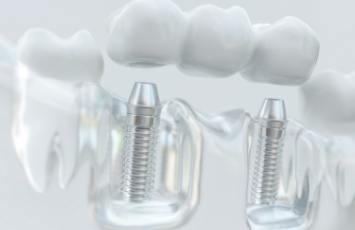Dental Bridges New York
We Can Help If Your Smile Is Incomplete

At some point in your life, you might find yourself with a missing tooth. The idea of facing life with a gap in your smile is not a fun one, so you’ll naturally want to know which options are available for filling in the space. In many cases, Dr. Newman may recommend a tried-and-true restorative dentistry solution: a dental bridge. If you would like to learn more about dental bridges in New York and how they can be used to replace one or multiple missing teeth, call our office.
Why Choose Gramercy Dental Studio for Dental Bridges?
- Bridges Made from Lifelike Materials
- Practice That Places Dental Implants
- Reasonable Fees for Dental Services
What Is a Dental Bridge?

A dental bridge has two main parts:
- Pontics: These are the free-standing prosthetic teeth that fill in the gaps in your smile. Each bridge will have at least one pontic; more will be used if multiple teeth in a row are lost.
- Crowns: There will be a crown on both ends of your bridge. Said crowns are attached to natural teeth or dental implant posts to keep your dental prosthesis in place.
Both the pontics and the crowns can be made out of the same kind of material and will typically be designed to blend in with the rest of your grin.
Types of Dental Bridges
When you hear the term “dental bridge,” you may think of the traditional kind that uses teeth for support. However, you can also have a bridge anchored to a pair of dental implant posts. Which option should you choose to regain a dazzling, complete smile? Our team will answer that question during your initial consultation, but here’s a basic overview of each choice:
Traditional Dental Bridge

To place a traditional dental bridge, we’ll need to make sure that the teeth next to the space in your mouth are strong enough to support the crowns. You can potentially be a candidate for a traditional bridge if you have either lost one tooth or several teeth that were all right next to each other.
Dental Implant Bridge

Since dental implants fuse with the jawbone, they can act like new tooth roots to prevent bone resorption. An implant bridge is normally considered when three or more teeth in a row are missing. Bear in mind that you’ll typically receive your bridge several months after the implants are placed.
The Benefits of Getting a Dental Bridge

While you technically have the option of leaving the gap in your smile empty, replacing your missing teeth is always the preferable choice. By having a dental bridge placed, you’ll be able to enjoy these benefits:
- Your bridge will be shaded so that it’s virtually indistinguishable from your real teeth.
- You’ll be capable of chewing all kinds of foods, including many that would give you trouble if your smile was still incomplete.
- You’ll be able to avoid dental drift.
- You’ll be able to keep your bridge for a long time (often around 15 years with good maintenance).

